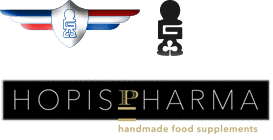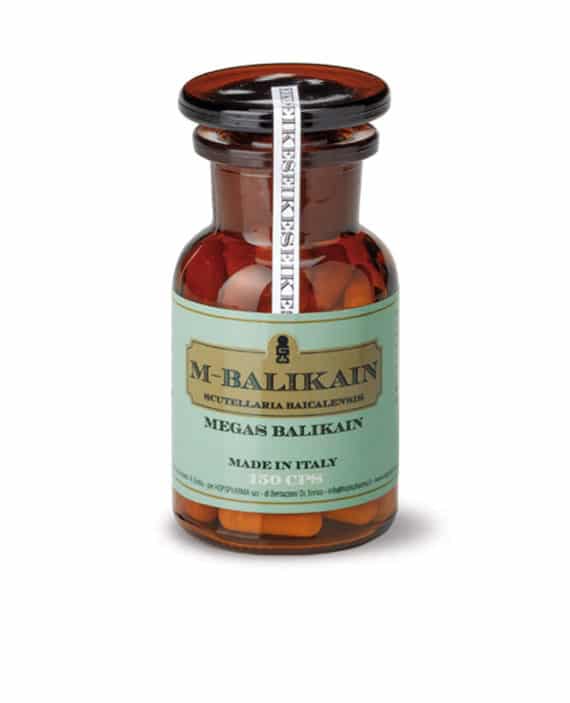Description
CHARACTERISTICS OF THE PRODUCT
Hericium – also known as Lion’s Mane or Old Man’s Beard – is the medicinal mushroom used in this product. Hericium is characterized by active constituents such as diterpenoids, steroids, polysaccharides together with other functional and prebiotic ingredients like rhamnose and mannose.
In Gastroeikes capsules Hericium is associated with deglycyrrhizinated licorice which has scar healing properties thanks to its flavonoids; the absence of glycyrrhizin acid limits the undesirable effects on blood pressure.
According to Traditional Chinese medicine (TCM)
Meridians: Stomach, spleen, (large) intestine
Action: Yin
Associated elements: Water, metal, earth
ASSOCIATED FUNCTIONS:
stomach acid
reflux
mucosal inflammation
degenerative diseases
stomach ache
the indications according to traditional Chinese medicine do not in any way want to replace western medicine and medical advice.
INGREDIENTS:
- HERICIUM ERINACEUM E.S. TIT 40% polysaccarides*
- GLYCYRRHIZA GLABRA(DEGLICERIZZINATED) DRIED EXTRACT*
HOW TO USE IT
1 Capsule 3 times a day preferably before meals.
DAILY DOSES
Hericium 1500 mg
Deglycyrrhizinated licorice 60 mg
PACKAGE
60 cps.
Glass vase with aluminum/silver cap, manually applied seal.
*country of origin R.P. China
BIBLIOGRAPHY
– Wu Y, Jiang H, Zhu E, Li J, Wang Q, Zhou W, Qin T, Wu X, Wu B, Huang Y. Hericium erinaceus polysaccharide facilitates restoration of injured intestinal mucosal immunity in Muscovy duck reovirus-infected Muscovy ducklings. Int J Biol Macromol. 2017 Sep 23. pii: S0141-8130(17)32140-2. doi: 10.1016/j.ijbiomac.2017.09.092
– Thongbai, B.; Rapior, S.; Hyde, K.D.; Wittstein, K.; Stadler, M. Hericium erinaceus, an amazing medicinal mushroom. Mycol. Prog. 2015, 14, 91–113.
– Ma, B.J.; Shen, J.W.; Yu, H.Y.; Ruan, Y.; Wu, T.T.; Zhao, X. Hericenones and erinacines: Stimulators of nerve growth factor (NGF) biosynthesis in Hericium erinaceus. Mycology 2010, 1, 92–98
– Zhang, J.; An, S.; Hu, W.; Teng, M.; Wang, X.; Qu, Y.; Liu, Y.; Yuan, Y.; Wang, D. The Neuroprotective Properties of Hericium erinaceus in Glutamate-Damaged Differentiated PC12 Cells and an Alzheimer’s Disease Mouse Model. Int. J. Mol. Sci. 2016, 17, 1810.
-Y. Tsukimi, C. Nozue, and S. Okabe, “Effects of leminoprazole, omeprazole and sucralfate on indomethacin-induced delayed healing of kissing gastric ulcers in rats,” Journal of Gastroenterology and Hepatology, vol. 11, no. 4, pp. 335–340, 1996.
–Federico Brandalise, Valentina Cesaroni, Andrej Gregori, et al., “Dietary Supplementation of Hericium erinaceus Increases Mossy Fiber-CA3 Hippocampal Neurotransmission and Recognition Memory in Wild-Type Mice,” Evidence-Based Complementary and Alternative Medicine, vol. 2017, Article ID 3864340, 13 pages, 2017. doi:10.1155/2017/3864340.
-K. Mori, S. Inatomi, K. Ouchi, Y. Azumi, and T. Tuchida, “Improving effects of the mushroom Yamabushitake (Hericium erinaceus) on mild cognitive impairment: a double-blind placebo-controlled clinical trial,” Phytotherapy Research, vol. 23, no. 3, pp. 367–372, 2009.
-J. M. Conner, K. M. Franks, A. K. Titterness et al., “NGF is essential for hippocampal plasticity and learning,” The Journal of Neuroscience, vol. 29, no. 35, pp. 10883–10889, 2009.
-K. Mori, Y. Obara, M. Hirota et al., “Nerve growth factor-inducing activity of Hericium erinaceus in 1321N1 human astrocytoma cells,” Biological and Pharmaceutical Bulletin, vol. 31, no. 9, pp. 1727–1732, 2008.
-G. Kempermann, “Adult neurogenesis: an evolutionary perspective,” Cold Spring Harbor Perspectives in Biology, vol. 8, no. 2, Article ID a018986, pp. 1–9, 2016.
-Jing-Yang Wong, Mahmood Ameen Abdulla, Jegadeesh Raman, et al., “Gastroprotective Effects of Lion’s Mane Mushroom Hericium erinaceus (Bull.:Fr.) Pers. (Aphyllophoromycetideae) Extract against Ethanol-Induced Ulcer in Rats,” Evidence-Based Complementary and Alternative Medicine, vol. 2013, Article ID 492976, 9 pages, 2013. doi:10.1155/2013/492976
-J. L. Wallace, “Recent advances in gastric ulcer therapeutics,” Current Opinion in Pharmacology, vol. 5, no. 6, pp. 573–577, 2005.
-J. Yamahara, M. Mochizuki, H. Q. Rong, H. Matsuda, and H. Fujimura, “The anti-ulcer effect in rats of ginger constituents,” Journal of Ethnopharmacology, vol. 23, no. 2-3, pp. 299–304, 1988.
-K.-H. Wong, M. Naidu, P. David et al., “Peripheral nerve regeneration following crush injury to rat peroneal nerve by aqueous extract of medicinal mushroom Hericium erinaceus (Bull.: Fr) Pers. (Aphyllophoromycetideae),” Evidence-Based Complementary and Alternative Medicine, vol. 2011, Article ID 580752, 2011.
–Liu J, Kandasamy S, Zhang J, Kirby CW, Karakach T, Hafting J, Critchley AT, Evans F, Prithiviraj B. Prebiotic effects of diet supplemented with the cultivated red seaweed Chondrus crispus or with fructo-oligo-saccharide on host immunity, colonic microbiota and gut microbial metabolites. BMC Complement Altern Med. 2015 Aug 14;15:279. doi: 10.1186/s12906-015-0802-5.
–Wu F, Zhou C, Zhou D, Ou S, Zhang X, Huang H. Structure characterization of a novel polysaccharide from Hericium erinaceus fruiting bodies and its immunomodulatory activities. Food Funct. 2017 Nov 23. doi: 10.1039/c7fo01389b.






